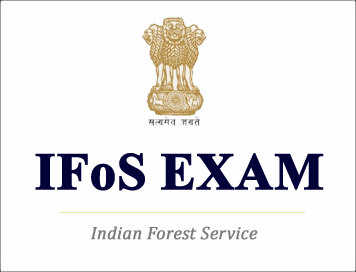(HOT) UPSC Current Affairs 2025 PDF
NEW! The Gist (NOV-2025) | E-BOOKS
(Download) UPSC IFoS (Main) Exam Paper-2020 "Geology"- II

(Download) UPSC IFoS (Main) Exam Paper-2020 "Geology"- II
Exam Name: IFoS (Main) Exam
Exam Year: 2020
Subject: "Geology"- II
'SECTION-A'
Q1. (a) Draw a neat labelled sketch of a petrological microscope. Add a brief note on each part of the microscope.
(b) Draw a labelled diagram of SiO4 tetrahedra. Give the structural classification of silicate minerals.
(c) What are the minimum symmetry requirements for the monoclinic system ? Draw stereographic projection corresponding to normal class of the system. Write names of two minerals that crystallize in this system.
(d) Discuss briefly about indexing a crystal face. Calculate the Miller indices of a crystal face having Weiss Symbol of la, bob, c.
(e) How would you distinguish between the following pairs of rocks petrographically: (i) Diorites and Anorthosites (ii) Carbonatites and Peridotites
Q2. (a) Give a brief account of primary sedimentary structures and discuss their significance. What is Pleochroism ? Describe the method of determining pleochroism in hornblende.
(b) Explain Bowen's reaction series. How do you explain corona structure with the help of this reaction series ?
(c) Explain what happens when a basaltic magma assimilates granitic country rock.
Q3. (a) What is Diagenesis ? Describe different processes of diagenesis with suitable examples and sketches.
(b) What are Alkaline rocks ? Discuss the petrogenesis of alkaline rocks. Give two Indian occurrences.
(c) Define Prograde and Retrograde Metamorphism. Discuss various mineral assemblages formed due to these processes involving basic igneous rocks.
Q4. (a) Define Contact Metamorphism. Explain the processes involved in the development of contact aureole.
(b) Draw a neat labelled sketch of the Diopside-Anorthite system (1 atm, dry). Describe the crystallization behaviour of an initial melt having composition Di80An20. Give petrogenetic significance of this system.
(c) Describe the crystal structure, types, mineralogy, composition, physical and optical properties of pyroxene group of minerals.
'SECTION B'
Q5. (a) How are ore deposits classified ? Give the salient features of Lindgren's classification.
(b) Explain the processes involved in the formation of skarn deposits.
(c) “Beach placers are vital for India's nuclear energy sector.” — Justify the statement.
(d) What is Co-ordination Number ? Describe with neat sketches different types of co-ordination found in minerals.
(e) Define Enthalpy, Entropy and Gibb's free energy. What is the relationship among these thermodynamic parameters ?
Q6. (a) Discuss with neat sketches ore mineral textures formed by replacement and exsolution processes.
(b) Give an account of the mineralogy, modes of occurrence and distribution of copper deposits of India.
(c) Explain with neat sketches the causes of landslides. What are the preventative measures to mitigate landslides ? Add a short note on the landslide-prone areas of India.
Q7. (a) What is Channel sampling ? Explain the steps involved in channel sampling.
(b) What are Meteorites ? Give a detailed account of the classification of meteorites.
(c) What are the widely used electrical methods of prospecting ? Explain self-potential method to decipher mineral bodies.
Q8. (a) Describe the following underground mining methods with suitable diagrams:
(i) Room and Pillar method
(ii) Cut and Fill stoping
(iii) Sub-level stoping
(b) Discuss the s Discuss the sources of groundwater pollution. Add a detailed note on the remedial measures to prevent it.
(c) How are coals classified based on the fixed carbon content ? Add a detailed note on the distribution of coal deposits of India.
(Ebook) Download IFoS Previous Year Papers e-Book
Study Kit for Indian Forest Service (IFoS) Prelims
Printed Study Material for IAS Exam (UPSC) (Combo)
<<Go Back To Main Page
Courtesy : UPSC


